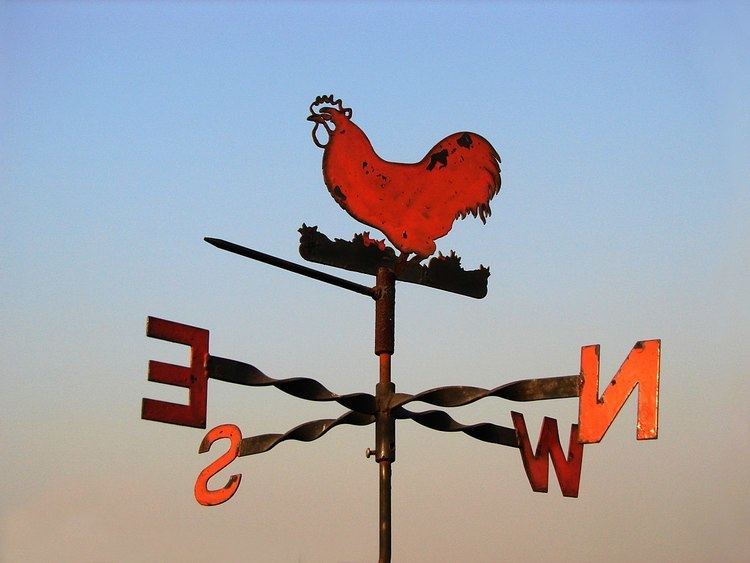 | ||
Wind direction is reported by the direction from which it originates. For example, a northerly wind blows from the north to the south. Wind direction is usually reported in cardinal directions or in azimuth degrees. Wind direction is measured in degrees clockwise from due north and so a wind coming from the south has a wind direction of 180 degrees; one from the east is 90 degrees.
Measurement techniques
A variety of instruments can be used to measure wind direction, such as the windsock and wind vane. Both of these instruments work by moving to minimize air resistance. The way a weather vane is pointed by prevailing winds indicates the direction from which the wind is blowing. The larger opening of a windsock faces the direction that the wind is blowing from; its tail, with the smaller opening, points in the direction the wind is blowing.
Modern instruments used to measure wind speed and direction are called anemometers and wind vanes, respectively. These types of instruments are used by the wind energy industry, both for wind resource assessment and turbine control.
In situations where modern instruments are not available, an index finger can be used to test the direction of wind. This is accomplished by wetting the finger and pointing it upwards. The side of the finger that feels "cool" is (approximately) the direction from which the wind is blowing. The "cool" sensation is caused by an increased rate of evaporation of the moisture on the finger due to the air flow across the finger, and consequently the "finger technique" of measuring wind direction does not work well in either very humid or very hot conditions. The same principle is used to measure the dew point using a sling psychrometer (a more accurate instrument than the human finger).
Another primitive technique for measuring wind direction is to take a pinch of grass and drop it; the direction that the grass falls is the direction the wind is blowing. This last technique is often used by golfers because (in addition to grass being convenient and plentiful on golf courses) it allows them to gauge the strength of the wind as well.
